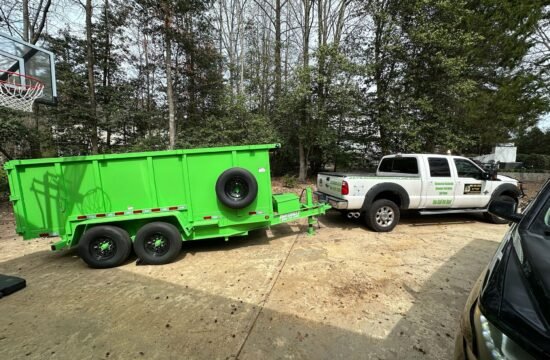When it comes to maintaining the beauty and stability of your property in Bend, Oregon, a retaining wall is more than just a decorative feature. It plays a critical role in soil erosion prevention, water management, and ensuring the longevity of your landscape. Bend’s varied terrain, with its rocky hillsides and sloping properties, makes retaining walls especially important for homeowners looking to stabilize their outdoor spaces.
In this article, we’ll explore the different types of retaining walls, why they are important in Bend, Oregon, and the steps involved in building one. Whether you’re looking to create more usable space, improve drainage, or simply protect your property from erosion, a well-built retaining wall can offer numerous benefits for your home.
What is a Retaining Wall?
A retaining wall is a structure designed to hold back soil or rock from eroding or shifting. It is typically built to prevent soil movement in areas with a steep incline or to manage drainage issues. Retaining walls come in many shapes and sizes and can be constructed from a variety of materials, including concrete, stone, brick, timber, and more.
The primary function of a retaining wall is to provide lateral support to soil, keeping it in place, especially in areas with sloping terrain. By creating a barrier, the wall prevents the soil from sliding down during rainfall or heavy winds. This is particularly important in regions like Bend, where the varying landscape can be prone to erosion.
In addition to its functional purpose, a retaining wall can also serve as an aesthetic feature, adding visual interest and depth to a yard or garden. The design and material choice can blend with your home’s exterior, complementing the overall look of your property.
Why Are Retaining Walls Important in Bend, Oregon?
Bend, Oregon, is known for its stunning landscapes, which include rugged hills, slopes, and mountainous terrain. While this topography is part of what makes the area so beautiful, it can also present challenges when it comes to managing soil erosion and water runoff. Retaining walls help homeowners address these challenges by stabilizing slopes and preventing soil from washing away during heavy rainfall or snowmelt.
In Bend’s high-desert climate, rainfall can be sporadic but intense when it does occur, leading to quick runoff. Without proper drainage control, water can wash away soil, damage your landscape, and even affect the foundation of your home. A retaining wall can mitigate these risks by providing a solid structure that redirects water flow and holds soil in place.
Furthermore, retaining walls are essential for properties with uneven terrain. In Bend, where many homes are built on hillsides or sloped lots, retaining walls allow homeowners to create more usable outdoor spaces, such as terraces or gardens, that would otherwise be difficult to manage.
Types of Retaining Walls for Bend Oregon
When considering a retaining wall for your Bend property, there are several different types to choose from, each with its advantages and ideal uses. Below, we’ll discuss the most common types of retaining walls and how they perform in Bend’s unique environment.
Concrete Retaining Walls
Concrete retaining walls are a popular choice due to their strength and durability. They are resistant to the elements, including Bend’s occasional freezing temperatures and strong winds. Concrete walls can be poured or built using pre-cast blocks, and they are highly customizable in terms of design and size. This makes them ideal for homeowners who need a strong, long-lasting solution for steep slopes or areas with high water flow.
One of the downsides to concrete walls is that they can be more expensive than other materials, both in terms of installation and maintenance. However, their longevity often makes them a worthwhile investment.
Stone and Brick Retaining Walls
For a more natural look, stone or brick retaining walls are a great option. These materials are aesthetically pleasing and can blend seamlessly into the landscape. Stone and brick walls offer great durability and can withstand the weather conditions in Bend, Oregon. However, they may require more labor-intensive construction compared to concrete walls, and depending on the stone’s weight, a proper foundation is necessary to prevent shifting.
Timber Retaining Walls
Timber retaining walls are often used for less steep slopes and can be an affordable option for homeowners in Bend. The natural appearance of wood blends well with gardens and rustic landscapes. However, timber may not last as long as other materials, especially when exposed to the elements. It’s crucial to use pressure-treated lumber to extend the lifespan of a timber retaining wall, but even then, it may require maintenance over time.
Segmental Retaining Walls
Segmental retaining walls are made from interlocking concrete blocks, which are easy to install and offer flexibility in design. This type of wall is particularly effective in areas with moderate slopes, as the blocks can adjust to changes in grade. Segmental walls are durable and require less maintenance compared to timber, though they may not provide the same aesthetic appeal as stone or brick.
Benefits of Installing a Retaining Wall in Bend
There are many reasons why installing a Retaining Wall Bend Oregon, can be a great investment for your property. Not only do they improve the structural integrity of your land, but they also offer aesthetic, environmental, and functional benefits.
Preventing Soil Erosion
One of the main functions of a retaining wall is to prevent soil erosion, especially on sloped terrain. Bend’s landscape is prone to soil shifting during heavy rainfall or rapid snowmelt, and without a retaining wall, erosion can cause significant damage to your property. A well-constructed wall keeps the soil in place and ensures your landscape remains intact.
Enhancing Property Value
A professionally built retaining wall can increase the value of your home by improving the functionality and appearance of your outdoor space. Whether you’re building a terraced garden or leveling a sloped area to create a usable yard, a retaining wall enhances the curb appeal of your property. This can be a major selling point if you ever decide to put your home on the market.
Improving Aesthetic Appeal
Retaining walls aren’t just functional—they can also be a beautiful addition to your landscape. Whether you choose stone, brick, or timber, a retaining wall can complement the architectural style of your home and create a visually appealing space. A well-designed wall can add depth, create defined outdoor areas, and serve as a backdrop for plants, flowers, or outdoor features.
Increasing Usable Outdoor Space
In areas with steep slopes or uneven ground, a retaining wall can help you make better use of your outdoor space. By leveling sections of your yard, you can create areas for gardening, entertaining, or relaxation that would otherwise be unusable. This extra space can be especially valuable in Bend, where larger properties may have sloped or hilly areas that need stabilization.
Steps to Build a Retaining Wall in Bend, Oregon
Building a retaining wall involves several important steps to ensure that it is structurally sound and functional. Below is a general guide to help you understand the process.
Site Assessment
The first step in building a retaining wall is to assess the site where the wall will be constructed. This involves determining the slope of the land, identifying potential drainage issues, and ensuring that there are no underground utilities or obstacles in the way. A professional contractor will usually conduct a thorough site survey to ensure the wall will be stable and effective.
Planning and Design
Once the site has been assessed, the next step is planning the design of the retaining wall. This includes choosing the materials, deciding on the height and length of the wall, and determining the type of wall that best suits your needs. It’s important to design a wall that not only functions properly but also fits well within the aesthetics of your landscape.
Excavation and Foundation
Before the wall itself can be constructed, the ground needs to be excavated to create a solid foundation. The depth of the excavation will depend on the size and height of the wall. A proper foundation is crucial for the stability of the wall, as it prevents shifting over time. In some cases, drainage materials like gravel or crushed stone may also be used to improve water flow and prevent pressure buildup behind the wall.
Wall Construction
After the foundation is prepared, the wall can be constructed. This involves layering the materials (whether concrete blocks, stone, or timber) and securing them in place. Each layer is carefully placed to ensure the wall is level and stable. In some cases, additional reinforcements like steel rods may be used to enhance the wall’s strength.
Drainage
Proper drainage is essential to prevent water from accumulating behind the retaining wall, which can lead to pressure buildup and eventual wall failure. Installing drainage pipes or gravel behind the wall helps redirect water flow, ensuring the wall remains intact even during periods of heavy rain or snowmelt.
Common Challenges in Retaining Wall Construction in Bend
While building a retaining wall can be a great solution for stabilizing your property, there are common challenges to be aware of. In Bend, issues like uneven terrain, rocky soil, and drainage problems are particularly prevalent.
Dealing with Rocky or Uneven Terrain
Bend’s landscape can be challenging to work with, especially if your property has rocky terrain or uneven slopes. This can make the excavation process more time-consuming and costly. In some cases, special equipment may be needed to remove large rocks or level the ground before building the wall.
Addressing Drainage Issues
Without proper drainage, a retaining wall can become unstable. Water accumulation behind the wall can cause soil erosion, pressure buildup, and eventually wall failure. Ensuring that proper drainage solutions, such as weep holes or gravel backfill, are incorporated into the design of the wall is crucial for its long-term success.
Managing Permits and Regulations
In Bend, certain retaining walls may require permits or must comply with local building codes. It’s important to check with your city or county government to determine if any regulations apply to your project. Failing to obtain the necessary permits could lead to fines or complications down the line.
Choosing the Right Contractor for Your Retaining Wall in Bend
Finding the right contractor to build your retaining wall is key to ensuring the project is completed successfully. A skilled contractor will have experience with the local terrain and weather conditions, as well as knowledge of the best materials and techniques for your specific needs.
Tips for Finding a Reliable Contractor
Look for contractors who are licensed, insured, and have a good reputation in the Bend area. Check online reviews, ask for references, and get multiple quotes to compare prices and services. A reputable contractor will be transparent about the cost, timeline, and materials used, ensuring that you get the best value for your investment.
Maintenance Tips for Your Retaining Wall
Proper maintenance can extend the lifespan of your retaining wall and ensure it continues to function effectively. Regular inspections for cracks, bulges, or signs of water damage can help catch problems early before they become serious issues. If you have a stone or brick wall, check for loose stones or shifting sections that may need to be repaired.
For timber walls, keep an eye on signs of rot or termite damage, and treat the wood as necessary. Also, ensure that drainage is functioning correctly to avoid water buildup behind the wall. By taking care of your retaining wall, you can enjoy its benefits for many years to come.
Conclusion
Retaining walls play a crucial role in maintaining the integrity and beauty of your property in Bend, Oregon. Whether you’re dealing with soil erosion, water runoff, or uneven terrain, a well-built retaining wall can stabilize your landscape and create more usable outdoor space. By understanding the types of walls available, the construction process, and the importance of proper maintenance, you can make an informed decision about installing a retaining wall that will benefit your home for years to come.











